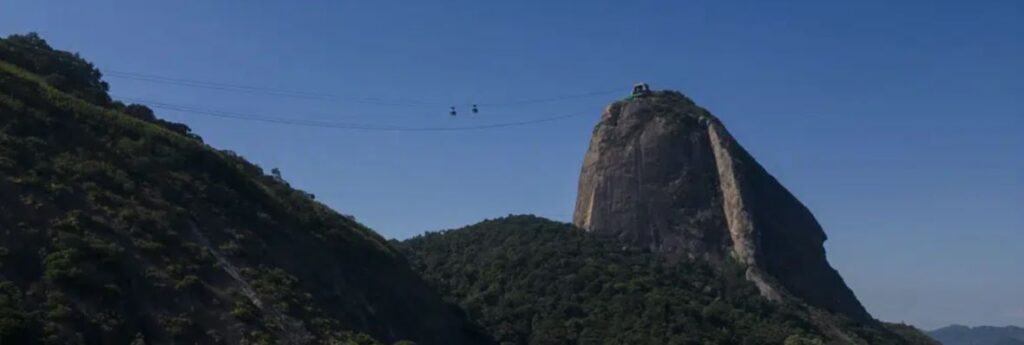Despite ongoing protests and an online petition with 11,000 signatures demanding that work be halted, a zipline on Rio de Janeiro’s world-famous Sugarloaf Mountain is scheduled to be inaugurated later this year.
The project, aimed at boosting tourism in the Brazilian city, includes four steel lines that will run 755 m. over the forest between Sugarloaf and Urca Hill with riders reaching speeds of 100 kph).
However, opponents say the attraction will cause unacceptable impacts.
Sugarloaf – known in Portuguese as Pao de Açucar – juts out of the earth at the entrance to Rio’s bay. The UN’s heritage centre named it a World Heritage Site in 2012 along with Rio’s other marquis mountains and, years earlier, Brazil’s heritage institute designated it a national monument.
The cable cars to its summit draw hundreds of thousands of Brazilian and international tourists each year, all eager to take in the panoramic views of the sprawling city’s beaches and forested mountains.
It is also a popular spot for sport climbing and birdwatching with preserved Atlantic Forest in a conservation unit, which towers over the sleepy Urca neighbourhood. As such, the prospect of riders buzzing down wires while screaming wildly has united mountaineers, environmental activists, and residents in opposition. They caution UNESCO could withdraw its heritage status.
“We are completely opposed to the transformation – which in truth has been happening for some time – of the summits of Urca Hill and Sugarloaf into an entertainment hub,” said André Ilha, a former director of biodiversity and protected areas of Rio state’s environment institute and founder of environmental non-profit Ecological Action Group.
“This is inducing people to go there for reasons that aren’t why the cable car was conceived: to appreciate the landscape,” he said.
Many residents of Urca are likewise displeased.
“We live in a small, peaceful neighbourhood. There will be visual and audible impact; no one goes down a zipline in silence,” said Aurimar dos Prazeres, president of a residents’ association. “And it isn’t one zipline. It’s four of them. One hundred people going down each hour. That’s craziness, and very big impact.”
Parque Bondinho Pao de Açúcar, which operates the cable cars and is behind the 50-million reais ($13 million) project, said in a statement that sound tests indicate noise from riders will not be perceptible from below, nor will it affect climbing routes. It says it has obtained all the necessary authorizations and licenses for the project from the national heritage institute and municipal authorities And it touts the ability to drive tourism.
“In addition to the great integration with nature, the intention is to improve the experience of our visitors and make the visit to the Parque Bondinho Pao de Açucar Park even more pleasant and unforgettable,” the company says on the zipline’s website.
The company also says it consulted society ahead of time. Residents, at least, say that’s not true.
Activists on are also concerned the zipline is a harbinger of future interventions. The company that administers the cable cars is studying a project that would modify the structure atop Sugarloaf’s summit.
Opponents have nicknamed it “the castle of horrors” and warn of all sorts of potential constructions – almost none of which appear in the company’s proposal. The company says the future project wouldn’t entail expansion of its current footprint nor the opening of new stores, and is meant to facilitate observation of the landscape, improve accessibility for the handicapped and separate the flow of tourists, workers, and cargo.

